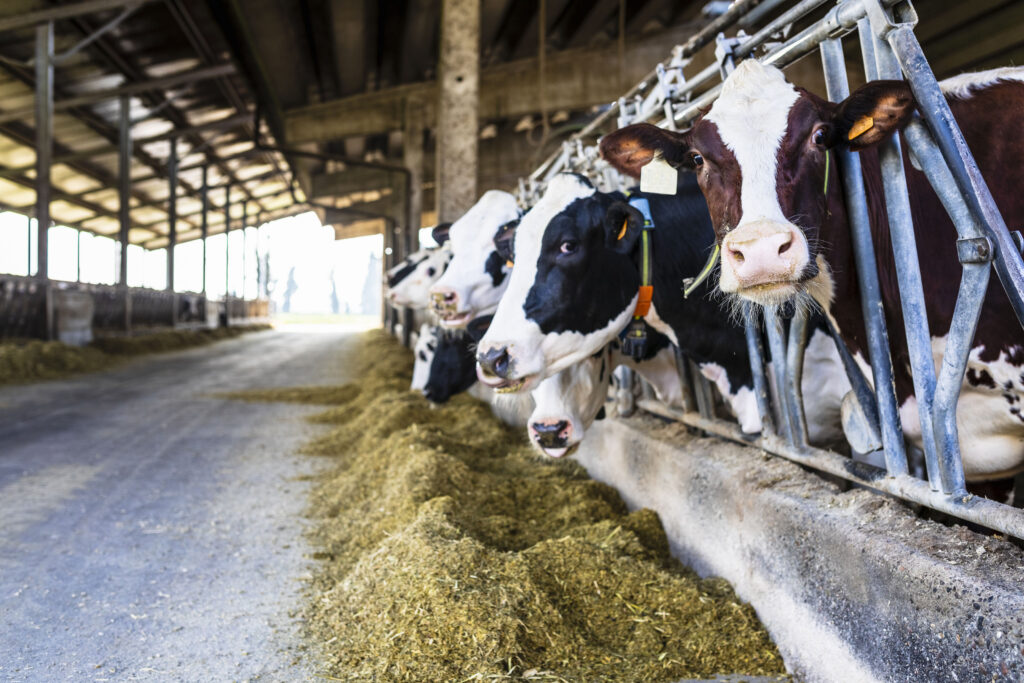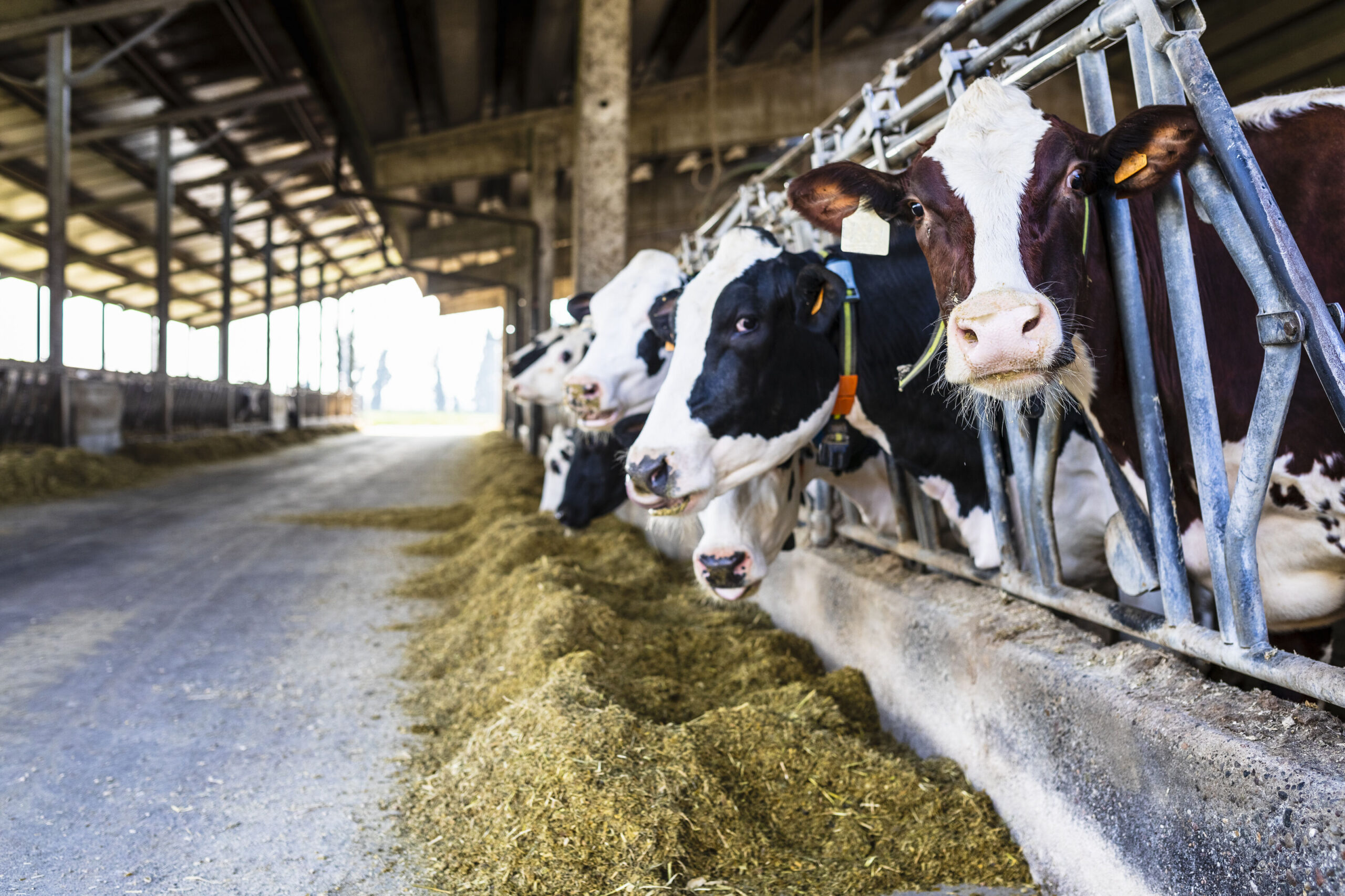
As the primary source of protein in most animal feed formulations, soybean meal is prized for its unique amino acid profile as an irreplaceable ingredient. More than three-fourths of the global soy supply — and nearly 98% of the world’s soybean meal — ends up in animal feed rations, more than any other oilseed or grain.
But not all soybean meal is created equally. Understanding the various processing methods and machines used to extract soybean oil is critical to understanding the advantages of Anderson’s proprietary expeller-pressed ECOMEAL process.
Let’s take a closer look at this process to explain how ECOMEAL makes a difference for processors and producers alike, adding value from the oil mill to the feed bin.
The benefits of mechanical extraction
Most large-scale soybean processors use chemical extraction to separate the oil from the solid meal. This process uses hot solvents like hexane to chemically dissolve fat from the seeds, leaving less than 1% residual oil behind. This high oil recovery rate makes solvent extraction the most efficient method for high-volume production.
Unfortunately, this process also leaves behind residual solvent that must be removed through additional processing before the oil and meal hit the market. Even after these final treatments, the products can’t be used in organic feed formulations because of the hazardous chemicals involved. As health concerns continue to drive the demand for more natural alternatives, animal feed markets are moving away from harsh chemical processing and toward mechanical pressing instead.
Mechanical processing methods leverage the brute force of expeller presses to physically crush oilseeds without using any chemicals. Soybean meal produced with chemical-free expeller pressing is essential to natural, organic poultry and livestock production — but processing high-quality meal is more complex than just crushing beans.
Read more about the growth potential of organic soybean meal.
The importance of upstream seed treatment
As nutritional as soybeans can be in various animal diets, they also contain harmful anti-nutritional factors that must be deactivated during processing to make products safe for consumption.
Like most legumes, soybeans produce a trypsin inhibitor (TI) as a natural defense mechanism to protect the plant from pests. These enzymes interfere with trypsin, the primary digestive enzyme that monogastric (single-stomached) animals use to break down proteins, which impairs the animal’s ability to digest and absorb essential nutrients. Elevated TI consumption can cause slow or decreased weight gain in swine and poultry and can even damage an animal’s intestinal health over time.
Raw soybeans typically contain about 30,000 to 50,000 TI units per gram, but safe levels for animal feed range from 10,000 to 15,000 TI units per gram. Proper heat treatment is the most effective way to deactivate soybean trypsin inhibitor enzymes during processing. This can be tricky because soybeans need enough heat to destroy the anti-nutritional factors — but not too much heat, which could degrade the protein’s quality, decrease the amino acids’ digestibility, and increase oxidation in the oil.
Although a mechanical expeller press generates some frictional heat in the process of crushing beans, this alone is insufficient to destroy the TI enzymes. Adding an extrusion system like the Anderson Dox™ Extruder ahead of the press can significantly improve processing efficiency and product quality. The Dox quickly cooks, dries, and shears seeds to break down the material, preparing it for pressing. With a short residence time of 20 to 30 seconds, the Dox preserves the proteins’ quality while deactivating the soybean’s anti-nutritional factors.
When paired with the Expeller, the Dox Extruder can reduce residual oil levels to as low as 5%, doubling the capacity of the press and the life of the pressing parts. This dynamic processing duo also reduces TI levels below 10,000 units per gram, making meal safe for consumption. Anderson’s proprietary processing technology, which combines the shearing action of the Extruder with the pressing action of the Expeller, produces chemical-free ECOMEAL with the low RO and TI levels needed for organic feed formulations.
Advantages of expeller-pressed ECOMEAL
To understand how ECOMEAL stacks up against the alternatives, researchers at the University of Georgia studied the performance of Anderson’s expeller-pressed soybean meal against a solvent-extracted meal and another mechanically extracted product from a competitor’s extruder and expeller. The feed trial, which analyzed the nutritional value and growth performance of the various diets for broilers, found ECOMEAL to be on par with other poultry feed products.
However, the true advantages of the expeller-pressed ECOMEAL process begin long before the feed ever hits the farm. Pairing the Extruder and Expeller together creates operational efficiencies in the processing plant, requiring less horsepower and less floor space than other systems. This allows processors to crush more soybeans more efficiently at a lower cost per ton. Additionally, Anderson’s durable equipment leads the industry in uptime, saving processors from excessive maintenance costs and downtime to offer the lowest total cost of ownership.
From the soybean processing facility all the way to the farm, Anderson’s ECOMEAL process provides sustainably-produced, chemical-free, expeller-pressed meal that meets the growing demand for natural, organic alternatives to affordable feed and food production.
To learn more about expeller-pressed ECOMEAL, contact Anderson International.
